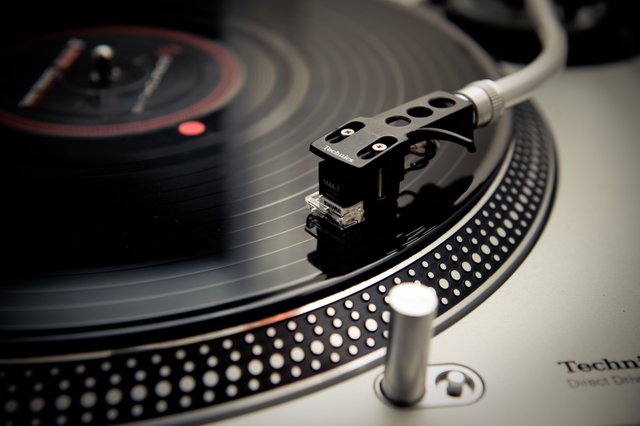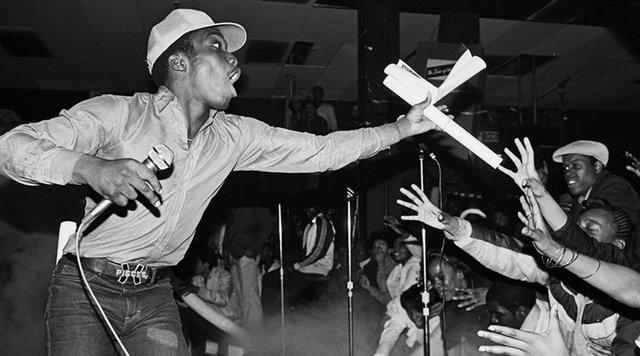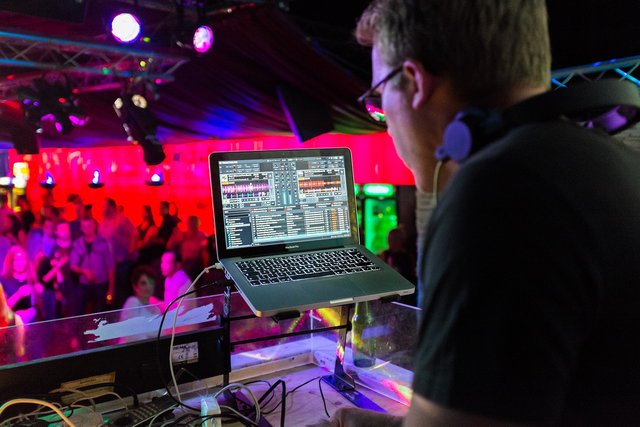The Origin, Evolution, and Current State of Hip Hop

Since its inception, hip hop has been difficult to define. Simplistically, hip hop music is any beat made by mixing sampled loops of other music. DJ Kool Herc invented the genre at a dancehall party in the Bronx by using two copies of James Brown's “Give It Up or Turn it Loose” to create a continuous loop of the drum break, which was the audience's favorite part. As he honed his skills, he would incorporate samples from other records and layer them on top of the initial drum break. As his style became popular, DJ's across New York began competing for notoriety. The concept of rapping emerged to keep the audience involved and to promote the DJ. Emcees would use rhyming to either brag about the DJ or create “call and response” chants with the audience.
The art of beat production and rapping has evolved continuously ever since. In 1994, Nasir “Nas” Jones released his debut album Illmatic, which many critics still consider to be the greatest hip hop album of all time. However, seven albums and twelve years later, Nas released the album Hip Hop Is Dead, inciting an ongoing discussion about the validity of today's hip hop. Of course Nas's opinion is only an opinion, but it is impossible to deny that the music and culture of hip hop have changed significantly since 1994 and even more since Kool Herc first looped “Give It Up or Turn It Loose.” The only way to assess the validity of today's hip hop is to compare its current state to its original state and analyze the factors that caused the transition.
Hip hop began as a means of expression for otherwise voiceless African-Americans and latinos living in impoverished urban neighborhoods. While they were surrounded by problems, these people were able to find comfort and confidence by becoming a part of a cultural community thats sole purpose was entertainment and empowerment through expression. Music, fashion, slang, graffiti, and break-dancing all reflected the hip hop community's desire for identity. Teenagers living in poverty could find self-worth through any aspect of the culture. Some gained reputation as DJ's or emcees, some tried to out-dance the other b-boys, some wore the coolest clothes, some spread their name through graffiti, some merely enjoyed the music, but they could all share the satisfaction of becoming a part of a unique and revolutionary culture. Hip hop music was exclusive to dancehall parties in various New York neighborhoods for several years, and socializing was a major draw for those events.

Although Kool Herc first looped drum breaks in 1972, it wasn't until 1979 that any recording of hip hop music was publicly released. Sugarhill Gang's famous track “Rapper's Delight” was the first. What began as a strictly live-music phenomenon soon became focused on studio recording. New technology allowed producers to control more samples and to create automated drum tracks. The drum-machine became immensely popular in the 1980's because it was simple to use, didn't require sampling, and fit with the electro sound that filled the era. Groups like Afrika Bombaataa blurred the line between electronic music and hip hop by using automated drums and replacing funk and soul samples with synthesizers; Meanwhile, groups like Grandmaster Flash and the Furious Five continued to explore the possibilities of strictly funk and soul sampling.
Run DMC came on the scene in 1983 caused major changes. They vaulted hip hop into mainstream popularity through a unique sound and style. Their crisp, hard-hitting beats and street fashion distinguished them from their flashy, disco-styled predecessors, and their fusion of hip hop and rock music on songs like “Walk This Way” broadened their appeal to white listeners. They were the first rap group to have a gold/platinum album, to perform in a major arena, to win a grammy, or to have a video on MTV. Their influence grew with their popularity, and hip hop fashion quickly became associated with sneakers, gold chains, and Adidas apparel. By forcing hip hop into mainstream attention, Run DMC provided the foundation for hip hop's “golden era.”
Following Run DMC's success, record labels began to recognize that there was plenty of money to be made in hip hop. Meanwhile, further advances in sampling and mixing technology opened the door for more intricate beat-making. The SP-1200, released in 1987, allowed producers to store, edit, or play numerous samples at the same time and made it far simpler to create multi-layered, atmospheric beats. The beginning of hip hop's "golden era," can basically be marked at the 1987 release of Eric B and Rakim's first album, "Paid in Full,” which used many layers of audio loops to create a rich, atmospheric sound that contrasted the minimalist and usually drum machine-produced tracks of their competitors. Rakim's lyrics and delivery were also quite revolutionary. He used complex rhythm, internal rhyme schemes, and a cool, casual speaking voice. While most rappers were bragging about their street cred, Rakim bragged about his lyricism. "Paid in Full" ended up being very successful, and its popularity fueled a widespread surge in lyricism and sampling. Record companies recognized the potential in hip hop music and started signing artists left and right. As was always the case, hip hop groups needed to differentiate themselves from their competitors, and as a result a vast variety of styles emerged in the late eighties and early nineties.
Innovation in mainstream hip hop peaked during this era. Producers found more and more eclectic records to sample from and continued to develop techniques like record-scratching that added additional elements to the music. Rap styles began to diverge greatly in order to cater to various audiences. Rappers had to either rap with a unique flow or unique lyrics in order to get noticed. Exaggeration became fairly excessive which led to the creation of gangsta rap, which combined hard-hitting, minimalist beats with lyrics that glorified gangs. What made this era so special was that there was finally something for everyone. Originally, hip hoppers could only hear the music through dancehall DJ's or the limited variety of recordings, but now there was so much variety that you could find a very specific style that appealed to you and search for more hip hop that fit that style.
It's unclear exactly when the “golden era” came to an end, but technology certainly played a role. Hip hop, along with the entire music industry, was dramatically changed by the emergence of the internet and digital audio files. Suddenly, consumers could choose to purchase individual tracks instead of entire albums, or better yet, just illegally download the music for free. The instant gratification of downloading or streaming an individual song versus an entire album has completely changed the way people listen to hip hop music. In the nineties, you would have to pay for an entire album, so you would feel obligated to listen to the whole thing. In doing so, you get a full appreciation of the artist's goals, ideas, strengths, and weaknesses. You might also be inclined to look through the album info to see who produced each track—you could broaden your horizons by pursuing more music by your favorite producers. Today, the average listener either buys individual tracks on the basis of popularity, streams them on Spotify, or downloads the music illegally. Downloading music illegally has become so common and it seems absurd to consider paying for music. This notion has turned the entire music industry on its head. A significant and steady decline in album sales meant record companies were forced to trim down and promote only their best-selling artists. Now there are far less talent recruiters despite a growth in aspiring musicians. This has prevented many talented artists from being noticed and has also precipitated a steadily growing fusion of hip hop and pop music. The bottom line is that pop music sells, so throwing in pop hooks with hip hop instrumentals has become common.

Advances in beat-making technology have subtly led to major changes that are now becoming conspicuous. Computer programs now allow even the most inexperienced producer to make studio quality beats using a cache of pre-recorded drum and instrument samples. Record companies quickly adopted these methods of beat production because they don't require samples from copyrighted material and thus there is less hassle in releasing the music. On one hand, these programs have made it easier for dedicated producers to make truly impressive, crisp-sounding beats. They also allow hip hop fans to explore their creativity and try making music themselves. On the other hand, the widespread popularity of computer-produced beats has had more than one adverse effect. First, the repeated use of simple, similar-sounding computerized instruments has dramatically reduced the diversity of musical styles in mainstream hip hop. The fusion of pop and hip hop was also facilitated by computer programs because producers can easily create the sounds of both genres on a single program. For example, rapper Wiz Khalifa and pop singer Katy Perry have both worked with Mikkel Erikson, who uses pre-recorded digital instrument loops on a single program to make songs for both genres. In addition to recording technology, live DJ technology has also been digitized and upgraded. But once again, there have been mixed results. Computer programs like Traktor and Ableton Live open a door for DJ's who have been striving to make better or more creative music, but they also allow people who haven't put in the work to create professional-sounding music and steal gigs from those who truly deserve them.
So where does hip hop go from here? A pessimist might say that file sharing, iTunes, Spotify, greedy record companies, computer programs, and ignorant consumers will continue to drive American hip hop towards a cookie-cutter, commercialized demise. However, I believe that hip hop now has more potential than ever before. While the era of the hip hop album may have passed due to digital streaming and illegal downloading, this has opened the door for a live hip hop renaissance. The only money being made through album sales is going to a very small group of superstar artists, meaning a hip hop career must be planned around more than just studio recordings. Also, artists do not need to be granted permission to sample from another song in a live format. Without the help of record companies to clear up copyright hurdles, independent artists are more likely to get their music out by performing instead of recording, and this allows for far more creative freedom. Groups like “Pretty Lights” proved that freely distributing music can still lead to success when coupled with social media promotion and touring.
Long time hip hop fans' general contempt for mainstream music has created an adoration of so-called “underground” hip hop groups. It seems that it is almost popular to be unpopular, as hip hop fans can take pride when they feel like they've discovered an unknown artist. Thanks to the internet, these fans can now share their discovery with all of their friends in a matter of moments, and artists can blow up overnight. While some lamented the onset of computerized DJ technology because of its detrimental effect on the careers of talented hip hop DJ's and producers, this technology has also empowered hip hop fans everywhere. Now fans can mix their own beats and in the process gain an appreciation for the musical aspect of hip hop and a more refined sense of what they want to hear. There is a smaller distinction between the artist and the consumer.
Hip hop's future is entirely in our hands. Popular hip hop will always reflect the desires of the consumer, and it's up to us to support the truly talented artists. While Nas released an album and single titled “Hip Hop Is Dead,” his statement implies that hip hop has always been a living, breathing entity. Just like a person, hip hop cannot be defined by a single moment in its history. Hip hop can only be summarized by its collective story, a story which continues to unfold today.
Cover Photo: Image Source
I know nothing about this but your publication seems amazing to me.
@youdontsay I confess that I admire you like reading and the story that I find interesting, this writing is really amazing, it continues like this
Happy afternoon
Interesante contenido sobre este estilo de música electrónica. Buen Post.
Interesting publication @ youdontsay has a good reading
you are really amazing I congratulate you
I might have to side with Nas though not completely HipHop is kinda dead i still don't get the idea behind mumble rap like seriously?
Nice piece on a bit of hiphop history
Asi es amigo con el paso del tiempo la música va evolucionando y con ella nuestros gustos también "lo que nos gusta hoy tal vez mañana no." @youdontsay
I love hip hop
Magnificent story. Good luck to you and Love.
To listen to the audio version of this article click on the play image.

Brought to you by @tts. If you find it useful please consider upvoting this reply.